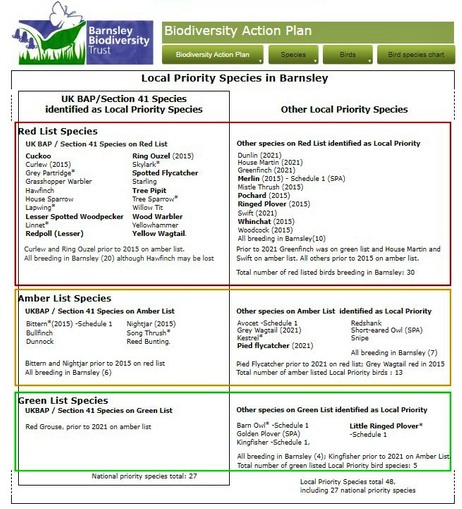

Biodiversity
Action
Plan
More information can be found via the links on the left.
An alphabetic list of Local Priority Species is given in the sidebar to the right of this page.
A chart gives information on the national conservation status of the Local Priority Species including which are red, amber or green listed. Click on the image below …

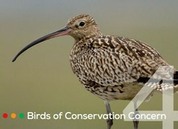
Many farmland species such as Lapwing and Tree Sparrow and woodland species such as Lesser Spotted Woodpecker have failed to recover from the declines that led to red listing in the past, declining further still.
Wetland birds on the other hand have tended to fare better with the work of the RSPB, Garganey Trust and Environment Agency attracting higher numbers of waders and special breeding birds such as Bittern to the Dearne Valley.
Natural England’s Standing Advice on the requirements for assessing the impacts of development specifies the need for surveys for birds listed in Section 41 of the NERC Act, birds listed in Schedule 1 of the Wildlife and Countryside Act, and Red and Amber list Birds of Conservation Concern.
Our focus for identifying Local Priority Species is the birds that breed or winter in Barnsley rather than any occasional visitors or birds that are on passage.
Our Local Priority Species for conservation in Barnsley are those bird species that are national priorities: on the Section 41 list of the NERC Act and/or on the BoCC Red List; and some that are Amber listed, and a few that are Green listed, of local interest and concern.
Birds are threatened by a number of sources. These include intensive farming and land management, a lack of traditional management, habitat loss, decline and fragmentation, predation, competition, pollution and climate change.
Where possible positive action should be taken to halt decline and to maintain or increase the numbers of Local Priority Species, by protecting and enhancing the places and habitats where they may breed, feed or shelter.
Conservation. Some bird species are generalists but others need specific habitat features including seeds, invertebrates and other food sources, and the conditions needed for nesting, cover and roosting, including lack of predation and disturbance. Monitoring bird species populations and distribution is important for informing conservation measures
Local Priority Species
All national priority and red listed species breeding in Barnsley [37] are local priority species.
27 UKBAP (2007) and Section 41 (2010) national priority bird species are found in Barnsley.
Although most of these [20] are included in the Red List (2021) as birds of the highest conservation concern, some are amber listed and one green listed.
An additional ten red-listed birds also breed in Barnsley.
We have also taken note of species listed in Schedule 1 of the Countryside and Wildlife Act.
To these species we have added seve amber and four green listed bird species that are of local interest and concern.
This brings the total of local priority bird species up to 48.
Lists of Local Priority Bird Species are given below.
However conservation should not be limited to these species. Conservation should also include local sites where there are:
- rare breeding bird species
- new breeding bird species expanding their range
- significant assemblages of breeding bird species
- significant assemblages of wintering bird species, including especially.Teal and Wigeon.
State of the UK’s Birds
published annually since 2000 by BTO, RSPB and other bodies.
Lapwing, Linnet, Grey Partridge, Skylark, Tree Sparrow, Yellowhammer
Migrant: Yellow Wagtail
Curlew, Lapwing, Redshank, Ringed Plover, Snipe
Migrant: Little Ringed Plover, Avocet
Lesser Spotted Woodpecker, Willow Tit, Woodcock, Lesser Redpoll, Hawfinch Migrant: Pied Flycatcher, Spotted Flycatcher, Tree Pipit, Wood Warbler
Curlew, Dunlin, Golden Plover, Red Grouse, Merlin, Short-eared owl,
Migrant: Nightjar, Ring Ouzel, Whinchat
Bittern, Reed Bunting
Bullfinch, Dunnock, Greenfinch,Mistle Thrush, Song Thrush, ,
Migrant: Grasshopper Warbler, Cuckoo
House Sparrow, Starling,
Migrant: House Martin, Swift
Barn Owl, Kestrel, Merlin, Short-eared Owl
Bird species of conservation concern breeding in Barnsley include:
Birds of Conservation Concern 2021 previously published in 2015, 2009, 2002 and 1996
Bird species. From moorland birds to the profusion of waders and waterfowl in the Dearne Valley wetlands, the wide range of habitats in Barnsley supports in turn a wide range of breeding, wintering and passage birds. At least 130 bird species breed in the Barnsley area.
However in common with the rest of the country, many bird species have severely declined in numbers in Barnsley, Corn Bunting and Twite to the extent that they have not recently bred here. However there has been some success with Bittern and Avocet now breeding in the Dearne Valley.
At least 30 birds on the Birds of Conservation Concern (BoCC) Red List due to the severity of their decline, breed or winter in Barnsley.
Both national priority species and red listed species are based on decline in numbers and not rarity. Common and widespread species in decline such as House Sparrow and Starling are included.
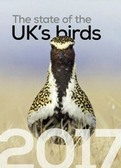
Grey Wagtail, Kingfisher, Pochard
Wintering birds include Teal and Wigeon in some numbers.
Bird species
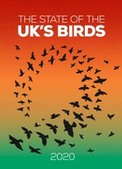
Protection
Most birds are protected by the Wildlife & Countryside Act 1981;
Schedule 1 bird species to the extent that is an offence to intentionally or recklessly disturb at, on or near an ‘active’ nest.
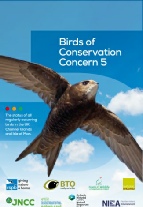
Updated from Birds of Conservation Concern [BoCC5] published December 2021
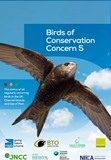
Alphabetic List of Local Priority Bird Species
Avocet: Sched 1 Amber
Barn Owl*: Sched 1 Green
Bittern*: S41, Sched 1 Amber VU
Bullfinch: S41 Amber
Cuckoo: S41, Red
Curlew: S41 Red EN
Dunlin Red VU
Dunnock: S41 Amber
Golden Plover Green (SPA)
Grasshopper Warbler: S41 Red
Greenfinch Red EN
Grey Partridge*: S41 Red VU
Grey Wagtail: Amber NT
Hawfinch: S41 Red EN
House Martin: Red NT
House Sparrow: S41 Red
Kestrel*: Amber VU
Kingfisher: Sched 1 Green VU
Lapwing*: S41 Red VU
Lesser Spotted
Woodpecker: S41 Red VU
Linnet*: S41 Red
Little Ringed Plover*: Green
Merlin: Sched 1 Red (SPA) EN
Mistle Thrush: Red NT
Nightjar: S41 Amber
Pied Flycatcher: Amber NT
Pochard: Red Vul
Red Grouse: S41 Green
Redpoll (Lesser) S41 Red
Redshank: Amber
Reed Bunting: S41 Amber
Ring Ouzel: S41 Red NT
Ringed Plover: Red VU
Short-eared Owl, Amber (SPA) EN
Skylark*: S41 Red
Snipe: Amber Vul
Song Thrush*: S41 Amber
Spotted Flycatcher: S41 Red NT
Starling: S41 Red VU
Swift: Red M EN
Tree Pipit: S41 Red
Tree Sparrow*: S41 Red VU
Whinchat: Red NT
Willow Tit: S41 Red EN
Wood Warbler: S41, Red VU
Woodcock: Red VU
Yellowhammer: S41 Red
Yellow Wagtail: S41 Red NT
48 Local Priority Species in total
S41 = Section 41 List / National Priority Species UKBAP
Sched 1 = Schedule 1 W&C Act
Red/Amber/Green: as assessed on Birds of Conservation Concern lists in 2021.
SPA = Species for which Special Protection Area designated
Endangered (EN), Vulnerable (VU), Near Threatened (NT): BoCC risk of extinction assessment in 2021 using IUCN criteria.
Bold = At greatest risk of being lost as Barnsley breeding bird.
